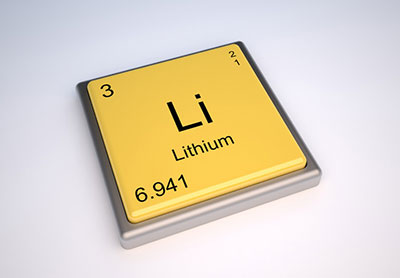A new elementary particle can solve the riddle of a missing lithium.

A new elementary particle X, not predicted by the Standard Model, can explain the riddle of the discrepancies in the predictions about the amount of lithium in the Universe with its observed number. An international team of physicists working under the leadership of Maxim Pospelov from the Canadian Institute of Theoretical Physics reported this in her work.
The riddle of lithium shortage lies in the fact that in comparison with the predicted amount of this substance, which should have been formed soon after the Big Bang, it is observed in the Universe three times less. The existence of a new particle has not yet been confirmed, but physicists have already appointed it responsible for the disappearance of lithium.
')
According to the theory of nucleosynthesis of the Big Bang ( primary nucleosynthesis ), soon after this epochal event (in the interval from 10 seconds to 20 minutes) protons and neutrons began to unite into nuclei. As a result, deuterium, a large amount of helium-4 and some helium-3 appeared. Their combination gave rise to beryllium-7, which then decayed to lithium-7.
Observations of cosmic microwave background radiation give us the exact ratio of photon-baryons, as a result of which the theory allows us to calculate the proportions in which different nuclei were located. And helium and deuterium fit these calculations very well. But lithium pumped up - it is observed 2-5 times smaller (depending on the calculation technique).
While astrophysicists continue to search for the process occurring in the stellar atmosphere, which could be responsible for reducing the amount of lithium. But physicists are proposing another theory — an unknown particle X, which may have met researchers in the LHC, could interact with protons and neutrons soon after the Big Bang, and affect the resulting amount of lithium.
A new particle must be charged, fairly stable, and have a mass of 1.6 to 20 MeV. It could break beryllium into helium-3 and -4 before it decays to lithium-7, or break deuterium, which would lead to the release of neutrons, which, in turn, would destroy lithium, and then recombine with protons, with the result that the total amount of deuterium would remain virtually unchanged.
Pospelov also claims that their new particle would be great for the role of an intermediary between ordinary and dark matter, because such a particle is tweaked in just 10-30 MeV.
The situation is complicated by the fact that the alleged particle X described in the article is not the same one that researchers from CERN may have stumbled upon recently. And this means that new particles beyond the framework of the Standard Model may already be as many as two.
Last December, two independent teams of physicists from CERN, the European Organization for Nuclear Research, working at the Large Hadron Collider, reported observing traces of an unidentified particle not predicted by the Standard Model. In the case of confirmation of their findings, it can become the largest discovery in physics.
So far, about this event, scientists have two assumptions. A potential new particle may turn out to be a heavier version of the Higgs boson, which is responsible for mass, or it may be a graviton, a carrier of gravity. If the existence of a new particle is confirmed, it will be a discovery more serious than the same Higgs boson, which only confirmed the existing theory.
Source: https://habr.com/ru/post/394841/
All Articles